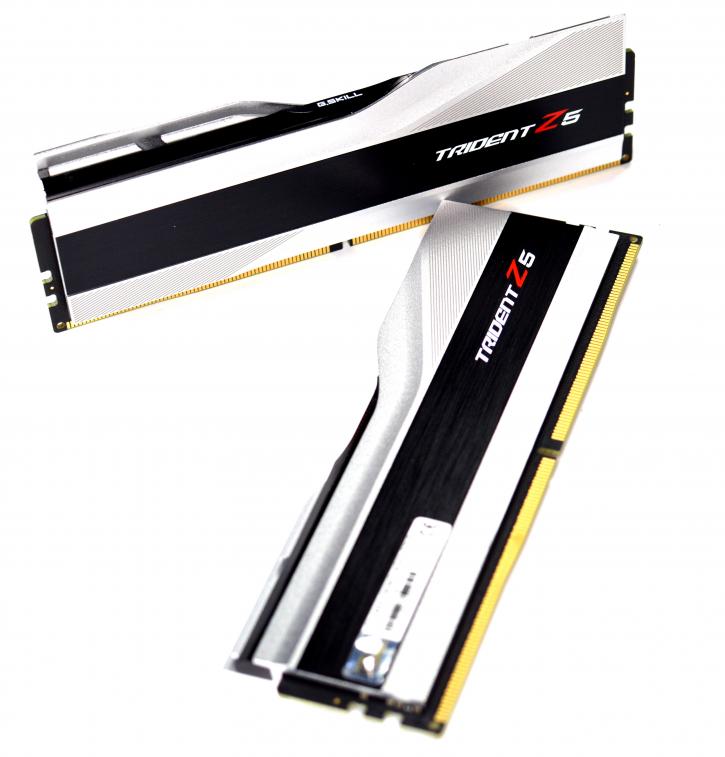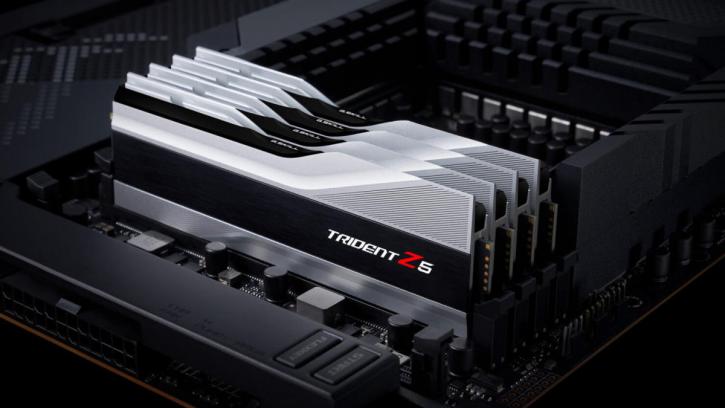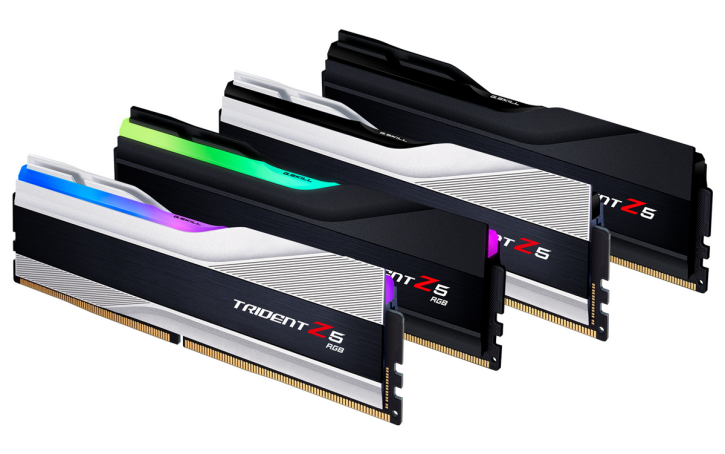Introduction
G.Skill TridentZ5 DDR5 5600 MHz CL36 32 GB (2x16 GB)
Will these Tridents be like Neptune of the DDR5?
G.Skill has prepared very well for launching a new memory standard and has presented three DDR5 series: the Trident Z5 (5600-6400 MHz), the Trident Z5 RGB (the same range as the non-RGB’s), and the Ripjaws S5 (5200-5600 MHz). They all come in 32 GB kits (2 x 16 GB), and their frequency is higher than the base 4800 MHz. Today, we are checking the G.Skill TridentZ5 5600 MHz CL36 DDR5 kit. It’s not the high-end of the series, as even the 6400 MHz CL32 are available, and the 5600 MHz is the lowest frequency you can get from this DDR5 family.
Hilbert has used one of the kits from the Trident Z5 RGB series (6000 MHz CL36) in his DDR5 scaling article, where you can find the overall performance trends. DDR5 from G.Skill already set spectacular results in overclocking (of course using the LN2), as 8888 MHz and recently – even 9560 MHz. A quick reminder - DDR5 is the newest technology to hit the market, make headlines, and break world records. DDR4 RAMs operate on a single 64-bit bus, while DDR5 has two 32-bit buses (plus, in both cases, there is an additional 8-bit for ECC). As a result, a single module is identified as Dual Channel, while two are identified as Quad Channel. However, the solution itself does not match the throughput of HEDT platforms with processors with a four-channel controller. The internal (A / B) channels of DDR5 RAM also share the RCD (Register Clock Driver), which provides more output signals and longer pulse reading (8 vs. 16). The DDR5 comes with a Power Management Integrated Circuit (PMIC) from the most important things you need to know. It’s responsible for controlling voltage changes, optimizing the energy draw, and making it less demanding for the motherboard controller. The DDR4 nominal voltage is 1.2 V; for the DDR5, it’s 1.1 V. Typical XMP voltage for the older type of memory is 1.35V (sometimes 1.45 V); now, it’s mostly 1.25 V. Speaking of the XMP, till now, it was 2.0 revision, with the introduction of the DDR5 we’ve got the rev 3.0. The main difference is that the number of profiles has increased from three to five (three for the manufacturer settings and two placeholders for the users).
After this short introduction – let’s present a bit the review sample. It’s the lowest frequency kit available from the TridentZ5 series with a 5600 MHz clock, CL36-36-36-76 at 1.2V. G.Skill also has the following kits:
- 5600 CL40-40-40-76 (1.2V)
- 5600 CL40-40-40-89 (1.2V)
- 5600 CL36-36-36-89 (1.2V)
- 6000 CL40-40-40-76 (1.3V)
- 6000 CL40-40-40-96 (1.35V)
- 6000 CL36-36-36-76 (1.3V)
- 6000 CL36-36-36-96 (1.35V)
- 6400 CL32-39-39-102 (1.4V)
All versions are available in 2 x 16 GB – but that shouldn’t be an issue as 32 GB is enough for the majority of the users. The height of the memory module is 42 mm, so it’s a rather low-profile form, which should make the problems with the (air) CPU coolers very rare.
There are two color versions, black, and silver (which we’ve received). The TRIDENTZ5 is not equipped with the RGB; there’s a separate series for the LED enjoyers. We’ll check the kit only on one platform, with Z690 based motherboards (Asus Z690 Maximus Apex) combined with the Intel Core i9 12900K. We are traditionally going to try and squeeze something more out of it, so the standard 5600 MHz probably is not the last word here (or at least we might manage to fine-tune the latencies). If you prefer, you can always stay on the safe side and stick to the advertised frequency and latencies using XMP 3.0. The default parameters look great, so are the visual aspects – we need to check the performance then. A limited lifetime warranty backs the TridentZ5 series. The price is ~ 400 USD. Ok, next page, please.




